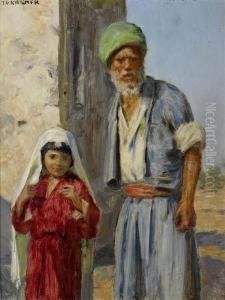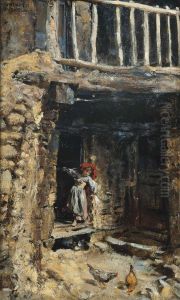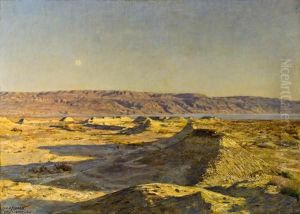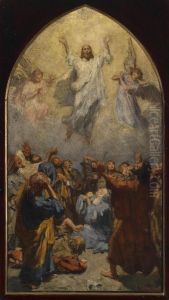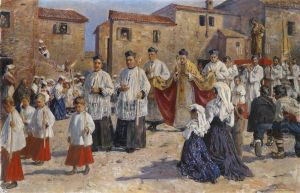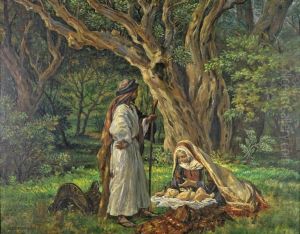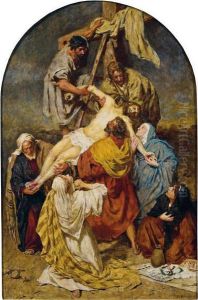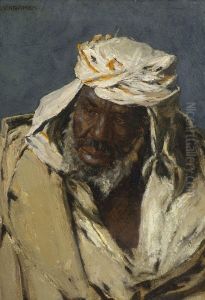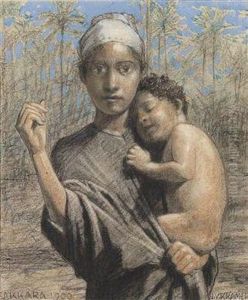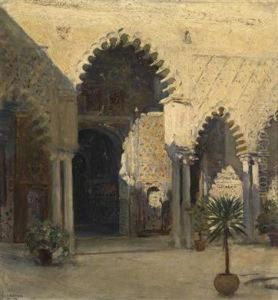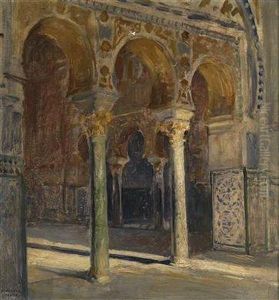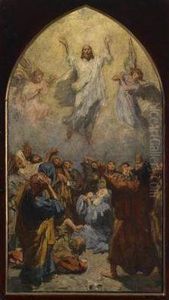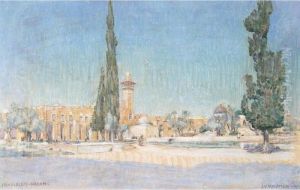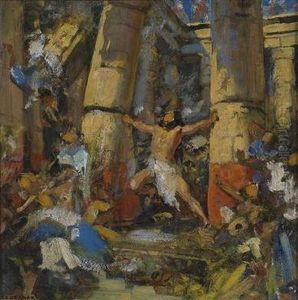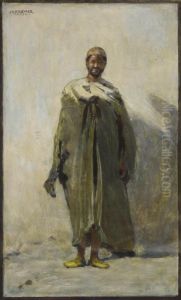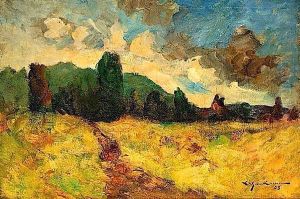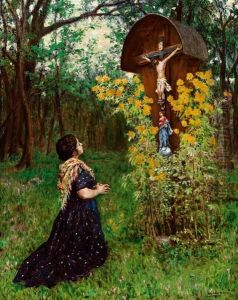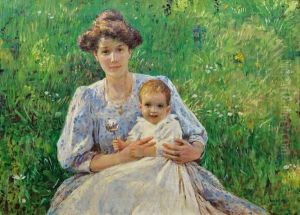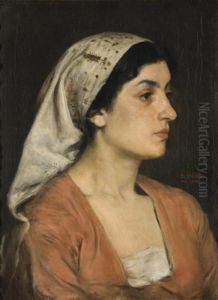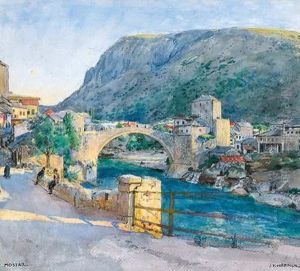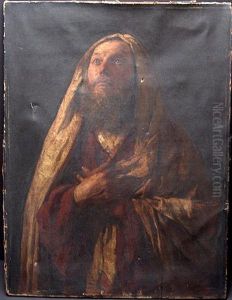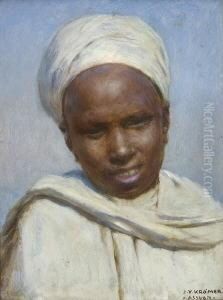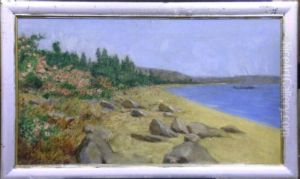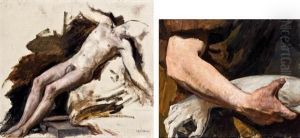Johann Viktor Kramer Paintings
Johann Viktor Krämer was an Austrian painter known for his association with the Viennese Secession, a movement that sought to break away from traditional academic art. Born on February 1, 1861, in Neustadt, Austria, Krämer initially studied architecture at the Technical College in Vienna. However, his passion for painting led him to switch to the Academy of Fine Arts Vienna, where he studied under Christian Griepenkerl and Karl von Blaas.
Krämer's style was influenced by Symbolism and Art Nouveau, and he often depicted landscapes, historical scenes, and genre works with a focus on mood and atmosphere. He traveled extensively throughout Europe and North Africa, drawing inspiration from the various cultures and environments he encountered. His travels influenced his palette, leading to the use of more vibrant colors and dynamic compositions.
In 1897, Krämer joined the Vienna Secession, which had been founded by artists like Gustav Klimt, Koloman Moser, and Josef Hoffmann. The secessionists were interested in exploring new approaches to art, design, and architecture, and they sought to provide a platform for unconventional and non-academic artists. Krämer participated in their exhibitions and contributed to the development of the group's aesthetic.
Krämer's work was well received, and he gained a reputation for his evocative and often melancholic paintings. Despite his association with the Secession, his art did not fully embrace the avant-garde trends of his contemporaries, and he retained a certain traditional aspect in his technique and subject matter.
Throughout his career, Krämer remained active in the Viennese art community. He also served as a professor at the School of Applied Arts in Vienna. His influence extended to his students, whom he encouraged to explore their individual styles within the broader context of Secessionist principles.
Johann Viktor Krämer continued to paint until his death on February 28, 1949, in Vienna. His legacy is preserved in various Austrian museums and collections, and his contributions to the Vienna Secession remain a significant part of Austrian art history.
